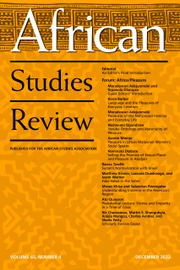Zamani: A Haunted Memoir of Tanzania is an intimate book that blends autobiography and memoir. The book traces the author’s life from her family’s move to Tanganyika (now Tanzania) until her 2013 visit. The anecdote is rooted in the Swahili concepts of “Zamani” (past/long ago) and “sasa” (now/present), which Bryce employs to examine how memory and history intersect and shape identity.
The book is divided into five parts, comprising twenty-seven chapters, each of which interweaves personal recollections with broader historical, cultural, and political contexts. In Part One, Bryce recounts her return to Tanzania after decades away, reflecting on the beauty of Mount Kilimanjaro and its cultural lore, the sacred baobab tree, and the Chagga’s beliefs about the mountain. The narrative then shifts to her parents, Jock and Anne Bryce. Bryce details their journey as British colonial servants and the challenges they faced as they settled in the remote Rondo Plateau (Lindi region in southern Tanzania).
In Part Two, Bryce recounts her parents’ experiences of isolation and adventure in Rondo. According to Bryce, her parents faced the dangers of wildlife and unreliable supplies. The narrative juxtaposes her father’s forestry work (forest management) with her mother’s adaptation to early motherhood under challenging conditions. Bryce’s later return as an adult to these places serves as both a personal pilgrimage and a meditation on memory and transformation.
Part Three centers on Bryce’s childhood in Moshi, at the foot of Kilimanjaro, where she revisits memories of her adolescence, family dynamics, and the awakening of racial consciousness. The narrative further details her childhood relationships with their African domestic helpers, particularly Martha, the ayah, whose departure reflects the political and social shifts during Tanzania’s move toward independence. Bryce interweaves local myths, the history of the Chagga people, and the legacy of colonial chiefs while expanding her narrative to include the Marangu Hotel and the evolving culture of Kilimanjaro guides.
Part Four is characterized by Bryce’s effort to reconcile personal memory with collective history, weaving together threads of colonial and postcolonial experience. As an adult, Bryce revisits her former British colonial school in Lushoto (northern Tanzania) and reconnects with people and places from her past, confronting childhood trauma and resilience. Her encounter with Father Peter, an Irish priest, provides historical context and an opportunity to reflect on Julius Nyerere—Tanzania’s first president. The last part parallels European, Indian, and Tanzanian families, and how each is shaped by migration and the search for a sense of belonging. To Bryce, her journey through Moshi, revisiting people and rituals, meditates on the interplay between her sense of belonging and loss, and the enduring presence of her past in the present.
Bryce’s recollection of her life experience in Tanzania’s colonial era comes from the white colonial perspective, privilege, and access. The memory of her life and humor between colonial masters and servants, particularly Martha-house girl (the term that Bryce criticizes), is very subjective and embeds whiteness narratives: “It was shocking not only because we loved her and thought she loved us, but because we did not think of ourselves as white people” (69). By nature, childhood memory is vague, one-sided, selective, and subjective. As a white colonial public servant’s child born in pre-independent Tanzania, Bryce writes about her memories and reconnects with her family. At one point, decades away from Tanzania, the author is unaware of the sociocultural politeness expected when interacting with guests, especially when asking direct personal questions. As Bryce asked “What do you think of my father? Mr. Bryce was a clever man; he trained us … and we were very sorry when he left” (100). On the one hand, the directness of the question and the comment may seem normal or even expected in some Western contexts. However, such direct questions give the author a privileged answer. The question is directed at her father; second, she is the guest. On the other hand, I appreciate the author’s acknowledgment of Abduel’s (a local retired forester) answer to be associated with a sense of politeness.

